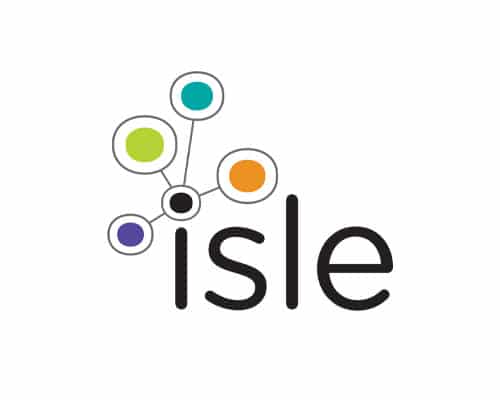It is the underlying infrastructure/assets and the challenges it faces that drive the technology we see in the industry today.
Isle Insights: Innovative Approach to Asset Management
Embarking on the Energy and Water Transition Journey: Isle Utilities’ Innovative Approach to Asset Management
Isle Utilities has always worked in innovation, and whilst innovation is usually associated with technology alone, it is the underlying infrastructure/assets and the challenges it faces that drive the technology we see in the industry today. However, there is a need to reflect on how assets are viewed within the industry, and how to adjust our lens, to ensure that the appropriate approach is taken to rise to today’s industry demands.
Water utilities, entrusted with the lifecycle of water, and energy companies, stewards of electrical assets, share a common thread in managing infrastructure critical to societal functioning. The essence of asset management permeates every facet of these two sectors.
Both sectors face the complex challenges of ageing infrastructure and public demand for sustainable practices, highlighting the need to move away from old traditional business assets.
This challenge demands bold action and innovative solutions as the sector goes through an energy and environmental transition.
Redefining Asset Management: A Core Imperative
Recognizing the underrepresentation of asset management at the boardroom level in the water and energy industries is crucial. While boards often include a CEO and CFO, who typically oversee HR and overheads, these roles may only represent a fraction of the company’s assets. However, it’s important to remember that assets constitute 100% of the company’s makeup.
In essence, energy and water companies are fundamentally about managing assets. Despite this, asset management can sometimes be overshadowed by the prominence of roles like Chief Risk Officers or Chief Customer Officers in public discussions. Asset management may not be considered glamorous, but it forms the cornerstone of effective operations for water and energy companies.
It’s not necessarily about adding an extra role to the board, but rather recognizing that all roles should fundamentally support asset management. While you may have a Head of Asset Management or Chief Engineering Officer on the board, every other role within the organization should also prioritize asset management. This includes functions like Finance, HR, and Risk.
Failure to adopt this mindset and assuming that the responsibility lies solely with the Head of Asset Management or Chief Engineering Officer sets the organization up for failure. Effective asset management requires a collective effort and a holistic approach across all functions within the company.
Problems stemming from inadequate asset management can manifest in various forms, including reduced efficiency and productivity, increased maintenance costs, safety hazards, compliance issues, diminished asset lifespan, and inaccurate financial reporting. Addressing these issues requires a proactive approach to asset management at all levels of the organization.
Asset management isn’t confined to tangible structures buried underground or towering above—it encompasses the unseen assets embedded in processes, personnel, and expertise.
Succinctly described by the UK’s Environmental Protection Agency as “maintaining a desired level of customer service at the best appropriate cost,” the implications of effective asset management extend far beyond mere operational efficiency—they hold the key to environmental preservation and community well-being.
At Isle Utilities, we regularly carry out career development, bringing new trends and insights to look at organisation models. Most recently, our work on a merger of four businesses enabled us to showcase the importance of understanding the future value of each operational model, whilst integrating them seamlessly to a wider new organisational model.
You can read more about that in our case study: Post-Merger integration of an energy business
Innovation as Our Guiding Principle
Embedded in our DNA is a commitment to innovation as a means of transitioning away from outdated processes and systems towards sustainable solutions. By viewing transitions through an environmental lens, we aim to replace ageing, environmentally unfriendly assets with sustainable alternatives, fostering long-term savings and substantial environmental benefits for local communities.
The Institute of Asset Management recently published their white paper acknowledging that “Asset managers need to plan and manage their networks with a future climate in mind, ensuring that daily asset management decision-making is passed through a lens of environmental protection and improvement. This must be achieved through collaboration with different parties, installing scientific knowledge about how to mitigate the effects of climate change, and staying ahead of regulatory and/or policy changes.“
Energy companies are increasingly transitioning towards sustainable, renewable energy sources, recognizing their role in decarbonizing electricity generation and significantly reducing emissions in various sectors.
While the political climate may sometimes favor “grey” solutions, we remain steadfast in our commitment to green infrastructure, including nature-based solutions, which often prove to be the most cost-effective and sustainable options in the long run.
Our approach emphasizes the creation of biodiversity, ecosystems, and circular economies, fostering a healthier and more resilient habitat for all stakeholders. In navigating the complexities of Environmental, Social, and Governance (ESG) considerations, we recognize the evolving landscape of capital management and social responsibility.
Isle has launched the ESG Maturity Assessment tool to help support Executives and Organisations with precisely the challenge of understanding the complexity around its needs and demands. We have derived our tool from various international standards such as SASB GRI TCFD; TNFD, EU SUDS.
Collaboration: The Key to Success
The energy and water transition journey represents a monumental opportunity to redefine their approach to asset management.
If you would like to know more about our approach, please connect with Keith Gardner.

